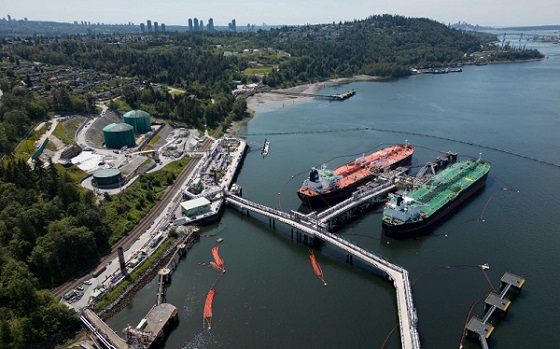Uncategorized
Multiple fatalities in New Zealand mosque shootings; 4 held

CHRISTCHURCH, New Zealand — Multiple people were killed in mass shootings at two mosques full of worshippers attending Friday prayers on what the prime minister called “one of New Zealand’s darkest days,” as authorities detained four people and defused explosive devices in what appeared to be a carefully planned attack.
Prime Minister Jacinda Ardern said the events in Christchurch represented “an extraordinary and unprecedented act of violence” and acknowledged many of those affected may be migrants and refugees.
Police took three men and a woman into custody after the shootings, which shocked people across the nation of 5 million people.
Authorities have not elaborated on who they detained. But a man who claimed responsibility for the shootings left a 74-page anti-immigrant manifesto in which he explained who he was and his reasoning for his actions.
Ardern at a news conference alluded to anti-immigrant sentiment as the possible motive, saying that while many people affected by the shootings may be migrants or refugees “they have chosen to make New Zealand their home, and it is their home. They are us. The person who has perpetuated this violence against us is not.”
Police Commissioner Mike Bush stopped short of calling the shootings a terrorist attack, although said “it doesn’t get any more serious in this country.” He said police were not aware of other suspects beyond the four who were detained but they couldn’t be certain.
“The attackers were apprehended by local police staff. There have been some absolute acts of bravery,” Bush said. “I’m hugely proud of our police staff, the way they responded to this. But let’s not presume the danger is gone.”
Bush said the defence force had defused a number of improvised explosive devices that were attached to vehicles stopped after the attacks.
He said anybody who was thinking of going to a mosque anywhere in New Zealand on Friday should stay put.
Authorities have not yet said how many people were killed and wounded in the shootings. “It’s a very serious and grave situation,” Bush said.
The deadliest occurred at the Masjid Al Noor mosque in central Christchurch at about 1:45 p.m.
Witness Len Peneha said he saw a man dressed in black enter the mosque and then heard dozens of shots, followed by people running from the mosque in terror.
Peneha, who lives next door to the mosque, said the gunman ran out of the mosque, dropped what appeared to be a semi-automatic weapon in his driveway, and fled.
Peneha said he then went into the mosque to try and help.
“I saw dead people everywhere. There were three in the hallway, at the door leading into the mosque, and people inside the mosque,” he said. “It’s unbelievable nutty. I don’t understand how anyone could do this to these people, to anyone. It’s ridiculous.”
He said he helped about five people recover in his home. He said one was slightly injured.
“I’ve lived next door to this mosque for about five years and the people are great, they’re very friendly,” he said. “I just don’t understand it.”
He said the gunman was white and was wearing a helmet with some kind of device on top, giving him a military-type appearance.
Police said there was a second shooting at the Linwood Masjid Mosque.
Mark Nichols told the New Zealand Herald he heard about five gunshots and that a Friday prayer-goer returned fire with a rifle or shotgun.
Nichols said he saw two injured people being carried out on stretchers past his automotive shop and that both people appeared to be alive.
The man who claimed responsibility for the shooting said he was 28-year-old white Australian who came to New Zealand only to plan and train for the attack. He said he was not a member of any organization, but had donated to and interacted with many nationalist groups, though he acted alone and no group ordered the attack.
He said the mosques in Christchurch and Linwood would be the targets, as would a third mosque in the town of Ashburton if he could make it there.
He said he chose New Zealand because of its location, to show that even the most remote parts of the world were not free of “mass immigration.”
New Zealand is generally considered to be a welcoming country for immigrants and refugees. Last year, the prime minister announced the country would boost its annual refugee quota from 1,000 to 1,500 starting in 2020. Ardern, whose party campaigned on the promise of raising the intake of refugees, dubbed the planned increase “the right thing to do.”
A cricket match between New Zealand and Bangladesh scheduled to start Saturday was cancelled after the Bangladesh cricket team had a narrow escape.
Players and members of the team’s coaching staff were reportedly on their bus, approaching the Masjid Al Noor mosque in Hagley Park when the shooting broke out.
Batsman Tamim Iqbal tweeted “entire team got saved from active shooters. Frightening experience and please keep us in your prayers.”
Mass shootings in New Zealand are exceedingly rare. The deadliest in modern history occurred in the small town of Aramoana in 1990, when gunman David Gray shot and killed 13 people following a dispute with a neighbour.
___
Perry reported from Wellington.
Mark Baker And Nick Perry, The Associated Press
Uncategorized
Cost of bureaucracy balloons 80 per cent in 10 years: Public Accounts

The cost of the bureaucracy increased by $6 billion last year, according to newly released numbers in Public Accounts disclosures. The Canadian Taxpayers Federation is calling on Prime Minister Mark Carney to immediately shrink the bureaucracy.
“The Public Accounts show the cost of the federal bureaucracy is out of control,” said Franco Terrazzano, CTF Federal Director. “Tinkering around the edges won’t cut it, Carney needs to take urgent action to shrink the bloated federal bureaucracy.”
The federal bureaucracy cost taxpayers $71.4 billion in 2024-25, according to the Public Accounts. The cost of the federal bureaucracy increased by $6 billion, or more than nine per cent, over the last year.
The federal bureaucracy cost taxpayers $39.6 billion in 2015-16, according to the Public Accounts. That means the cost of the federal bureaucracy increased 80 per cent over the last 10 years. The government added 99,000 extra bureaucrats between 2015-16 and 2024-25.
Half of Canadians say federal services have gotten worse since 2016, despite the massive increase in the federal bureaucracy, according to a Leger poll.
Not only has the size of the bureaucracy increased, the cost of consultants, contractors and outsourcing has increased as well. The government spent $23.1 billion on “professional and special services” last year, according to the Public Accounts. That’s an 11 per cent increase over the previous year. The government’s spending on professional and special services more than doubled since 2015-16.
“Taxpayers should not be paying way more for in-house government bureaucrats and way more for outside help,” Terrazzano said. “Mere promises to find minor savings in the federal bureaucracy won’t fix Canada’s finances.
“Taxpayers need Carney to take urgent action and significantly cut the number of bureaucrats now.”
Table: Cost of bureaucracy and professional and special services, Public Accounts
| Year | Bureaucracy | Professional and special services |
|
$71,369,677,000 |
$23,145,218,000 |
|
|
$65,326,643,000 |
$20,771,477,000 |
|
|
$56,467,851,000 |
$18,591,373,000 |
|
|
$60,676,243,000 |
$17,511,078,000 |
|
|
$52,984,272,000 |
$14,720,455,000 |
|
|
$46,349,166,000 |
$13,334,341,000 |
|
|
$46,131,628,000 |
$12,940,395,000 |
|
|
$45,262,821,000 |
$12,950,619,000 |
|
|
$38,909,594,000 |
$11,910,257,000 |
|
|
$39,616,656,000 |
$11,082,974,000 |
Uncategorized
Trump Admin Establishing Council To Make Buildings Beautiful Again


From the Daily Caller News Foundation
By Jason Hopkins
The Trump administration is creating a first-of-its-kind task force aimed at ushering in a new “Golden Age” of beautiful infrastructure across the U.S.
The Department of Transportation (DOT) will announce the establishment of the Beautifying Transportation Infrastructure Council (BTIC) on Thursday, the Daily Caller News Foundation exclusively learned. The BTIC seeks to advise Transportation Secretary Sean Duffy on design and policy ideas for key infrastructure projects, including highways, bridges and transit hubs.
“What happened to our country’s proud tradition of building great, big, beautiful things?” Duffy said in a statement shared with the DCNF. “It’s time the design for America’s latest infrastructure projects reflects our nation’s strength, pride, and promise.”
“We’re engaging the best and brightest minds in architectural design and engineering to make beautiful structures that move you and bring about a new Golden Age of Transportation,” Duffy continued.
Mini scoop – here is the DOT’s rollout of its Beautifying Transportation Infrastructure Council, which will be tasked with making our buildings beautiful again. pic.twitter.com/
9iV2xSxdJM — Jason Hopkins (@jasonhopkinsdc) October 23, 2025
The DOT is encouraging nominations of the country’s best architects, urban planners, artists and others to serve on the council, according to the department. While ensuring that efficiency and safety remain a top priority, the BTIC will provide guidance on projects that “enhance” public areas and develop aesthetic performance metrics.
The new council aligns with an executive order signed by President Donald Trump in August 2025 regarding infrastructure. The “Making Federal Architecture Beautiful Again” order calls for federal public buildings in the country to “respect regional architectural heritage” and aims to prevent federal construction projects from using modernist and brutalist architecture styles, instead returning to a classical style.
“The Founders, in line with great societies before them, attached great importance to Federal civic architecture,” Trump’s order stated. “They wanted America’s public buildings to inspire the American people and encourage civic virtue.”
“President George Washington and Secretary of State Thomas Jefferson consciously modeled the most important buildings in Washington, D.C., on the classical architecture of ancient Athens and Rome,” the order continued. “Because of their proven ability to meet these requirements, classical and traditional architecture are preferred modes of architectural design.”
The DOT invested millions in major infrastructure projects since Trump’s return to the White House. Duffy announced in August a $43 million transformation initiative of the New York Penn Station in New York City and in September unveiledmajor progress in the rehabilitation and modernization of Washington Union Station in Washington, D.C.
The BTIC will comprise up to 11 members who will serve two-year terms, with the chance to be reappointed, according to the DOT. The task force will meet biannually. The deadline for nominations will end Nov. 21.
-

 Business18 hours ago
Business18 hours agoNew airline compensation rules could threaten regional travel and push up ticket prices
-

 Health2 days ago
Health2 days agoCDC’s Autism Reversal: Inside the Collapse of a 25‑Year Public Health Narrative
-

 Crime2 days ago
Crime2 days agoCocaine, Manhunts, and Murder: Canadian Cartel Kingpin Prosecuted In US
-

 Daily Caller2 days ago
Daily Caller2 days agoBREAKING: Globalist Climate Conference Bursts Into Flames
-

 Energy2 days ago
Energy2 days agoHere’s what they don’t tell you about BC’s tanker ban
-

 Digital ID1 day ago
Digital ID1 day agoLeslyn Lewis urges fellow MPs to oppose Liberal push for mandatory digital IDs
-

 Crime21 hours ago
Crime21 hours agoHow Global Organized Crime Took Root In Canada
-

 Bruce Dowbiggin2 days ago
Bruce Dowbiggin2 days agoBurying Poilievre Is Job One In Carney’s Ottawa










